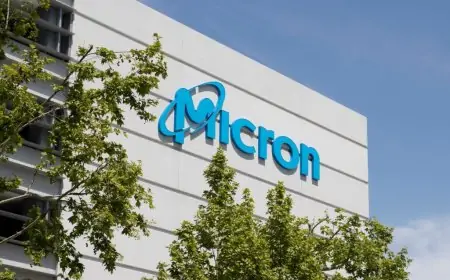UK's AI Ambitions Raise Concerns Over Potential Water Shortages
Industry experts warn that the UK's push to be a global AI leader could strain drinking water supplies due to data centers' water consumption.

The UK's ambition to become a global leader in Artificial Intelligence (AI) may worsen already limited drinking water supplies, according to industry experts. The vast data centers required for AI operations consume significant amounts of water to prevent overheating.
While the technology sector is working on more effective, less water-intensive cooling solutions, the Department for Science, Innovation, and Technology acknowledges the sustainability challenges these facilities pose. The government plans to establish multiple data centers nationwide to stimulate economic growth1. These energy-intensive server farms will receive priority access to the electricity grid, raising concerns about the government's clean energy goals for 20301. There are also worries about how these data centers could affect the availability of fresh drinking water for households and businesses, especially in the south of the UK, where climate change and rising populations are already causing water scarcity.
The government is supporting the development of nine new reservoirs to reduce the chances of water rationing during dry spells; however, some of these reservoirs are located in areas earmarked for new data centers. The first of the government's designated "AI growth zones" will be located in Culham, Oxfordshire, near a planned new reservoir at Abingdon. It remains unclear how much water the anticipated data centers nearby could draw from it.
The Royal Academy of Engineering urges the government to ensure technology companies accurately disclose their data centers' energy and water usage. The report also calls for environmental sustainability standards for all data centers, including minimizing the consumption of drinking water and transitioning to zero water usage for cooling purposes.
Many UK data centers did not respond to requests for information regarding their water consumption. These facilities use fresh, mains water instead of surface water to prevent obstructions in pipes and heat exchangers. Water usage can vary based on the local climate; cooler, wetter regions generally require less water. A standard data center might consume between 11 million and 19 million liters of water daily, comparable to a town of 30,000 to 50,000 people. During the initial phases of AI tool development, Microsoft's global water consumption surged by 34%, while a data center cluster in Iowa accounted for 6% of the district's water supply in a single month while training OpenAI's GPT-4.
Resistance to data centers is growing globally, particularly in water-scarce regions1. Google halted a data center construction in Chile due to water usage concerns and revamped the cooling system of another facility in Uruguay following local protests. Thames Water has cautioned data centers that they may encounter restrictions on water usage during heatwaves.
The government stated that AI Zones are designed to attract investments to locations where the current energy and water infrastructure is already established. Furthermore, recent regulatory changes by Ofwat are expected to "unlock £104 billion in expenditures by water companies" over the next five years. The data center industry contends that contemporary facilities are already operating with greater efficiency and that innovative cooling solutions that minimize water usage are advancing.
By 2050, England will require an additional five billion liters of water each day to meet the needs of its population. The regulator is encouraging data centers to predict and strategize their water usage and to investigate alternative water sources, including water reclamation.



























































